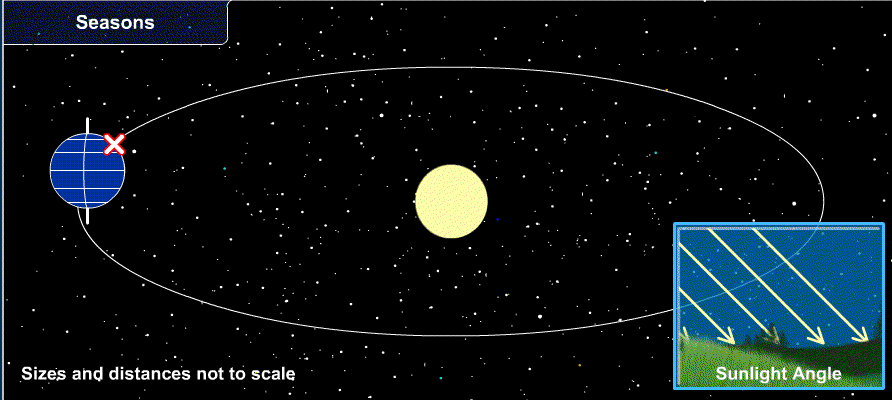
 Copyright © Michael Richmond.
This work is licensed under a Creative Commons License.
Copyright © Michael Richmond.
This work is licensed under a Creative Commons License.
Today, we'll look at the apparent motions of the Sun and Moon through the Earth's sky.
Here in Rochester, New York, there are four very distinct seasons throughout the year: spring, summer, autumn and winter. Each has its own typical temperature and length of day and night.
Q: What causes the seasons?
The answer is NOT "the distance between the Earth and the Sun." In fact, the Earth's slightly elliptical orbit brings it a bit closest to the Sun in January: right in the middle of the coldest time of the year for us in Rochester!
Month Distance from Sun ----------------------------------------- January 0.9833 AU April 0.9996 July 1.0151 October 0.9984 -----------------------------------------The table above expresses distances in terms of the Astronomical Unit (AU for short), which is defined as the semimajor axis of the Earth's orbit:
No, it's not the distance between Sun and Earth that causes the seasons: instead, it's the angle at which sunlight strikes the Earth's surface. Suppose that the Earth's rotation axis were perpendicular to the plane of its orbit around the Sun, like this:
No matter where the Earth might be in its orbit, at noon, sunlight would strike the ground in Rochester at the same angle.
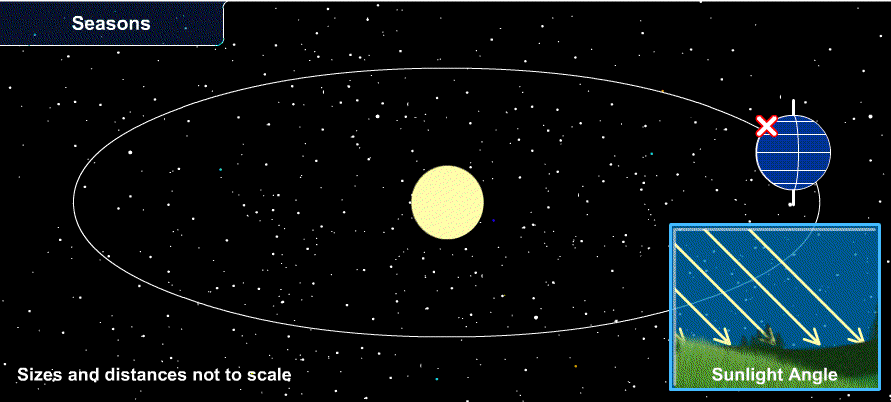
Q: The latitude of Rochester is about +43 degrees North.
At what angle away from the normal
(i.e. how far from perpendicular)
would sunlight strike the ground at noon?
However, in real life, the Earth's rotation axis is NOT perpendicular to the plane of its orbit. Instead, the rotation axis is tilted by about 23.5 degrees away from the perpendicular. That means that when the Earth is on one side of the Sun in its orbit, in June, sunlight strikes the ground most directly: we call this the summer solstice.
Six months later, in January, when the Earth is on the other side of its orbit, sunlight strikes the northern hemisphere with a more glancing blow: we call this the winter solstice.
Q: Recall that the latitude of Rochester is
about +43 degrees North. If it is high summer
in Rochester, at what angle from the perpendicular
does sunlight strike the Earth at noon?
Q: At what angle does sunlight strike the Earth
at noon during the depths of the Rochester winter?
Maybe it would help to see the changing direction of the Sun's rays on the Earth -- from space! Click on the picture to activate.
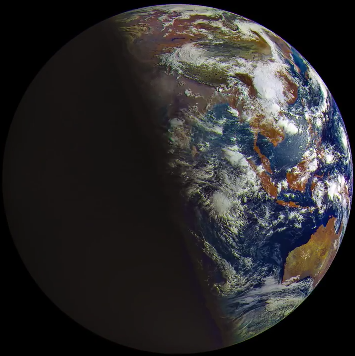
Images based on data from Russia's Elektro-L satellite,
movie made by SayJabberwocky
You can see the difference in the Sun's path through our sky over the course of the seasons in one of Regina Valkenborgh's solargraphs, shown below.
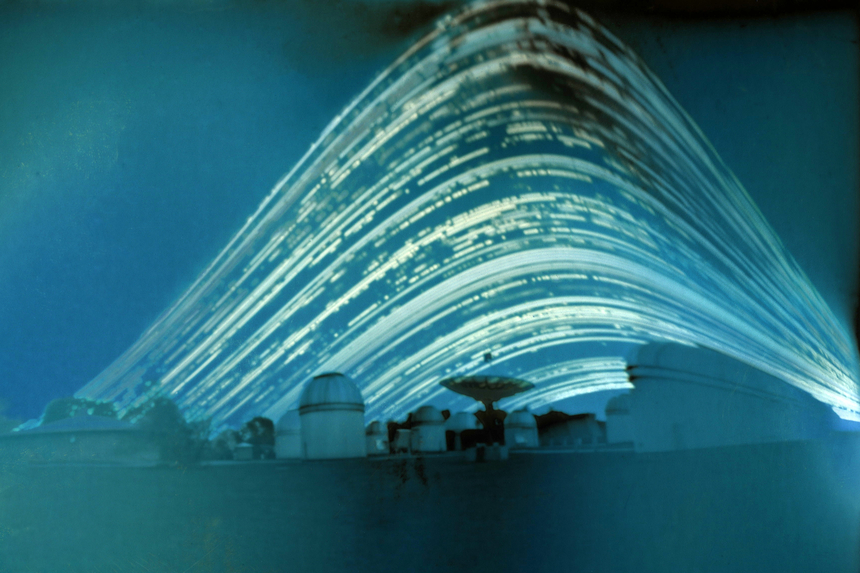
Image copyright:
Regina Valkenborgh
As the Moon orbits around the Earth, we see different phases, ranging from (the invisible) New Moon through First Quarter, Full Moon, Third Quarter, and back to New Moon.
There are several different periods which astronomers use to describe the motion of the Moon.
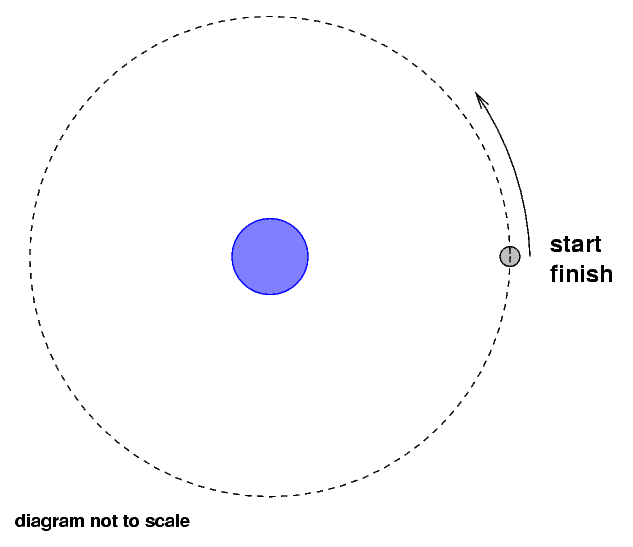
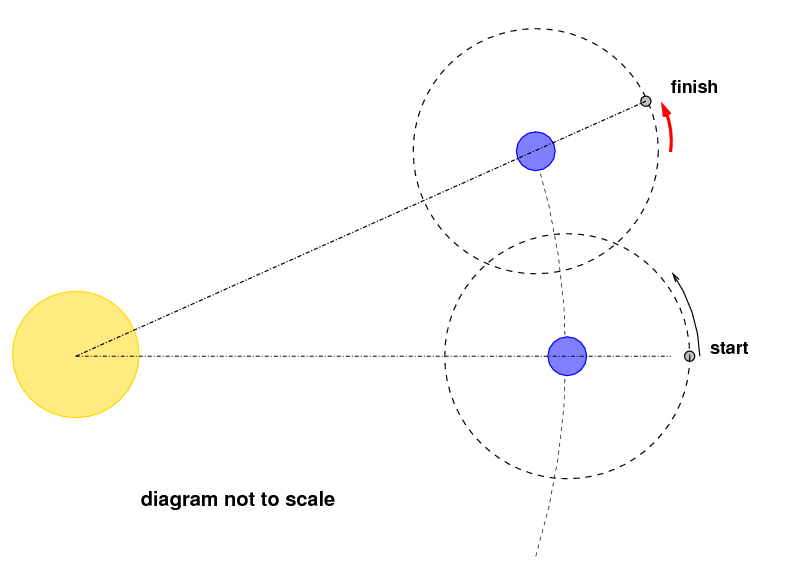
It turns out that the synodic and sidereal periods of a moon around its planet are related to the planet's orbital period around the Sun:
1 1 1
--------------- = --------------- - -----------------------
synodic period sidereal period planet's orbital period
If you look more closely at the Moon over the course of a full cycle, you'll start to see small variations in its size -- due to the eccentricity of the Moon's orbit around the Earth -- and very small changes in the visibility of regions near the limbs -- again due to the eccentricity of the Moon's orbit.
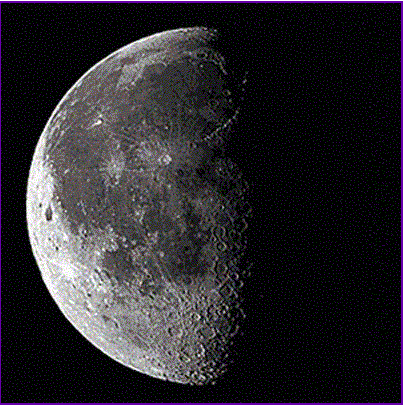
Thanks to
Astronomy Picture of the Day
and Antonio Cidadao
We on Earth are lucky to be the beneficiaries of a cosmic coincidence (and I really mean that!). Consider the apparent angular size of the Sun, as seen from the Earth:

We can calculate the angle theta using trigonometry:
Q: Given diameter of Sun d = 1.39 million km,
and distance to the Sun L = 150 million km,
what is the apparent angular size of the Sun?
Q: Given diameter of Moon d = 3476 km,
and distance to the Moon L = 384,000 km,
what is the apparent angular size of the Moon?
As a result of this coincidence, we see a beautiful phenomenon -- the solar eclipse when the Moon passes between the Sun and Earth:
We also see lunar eclipses when the Moon passes through the Earth's shadow:
Q: Is there a solar eclipse during every New Moon?
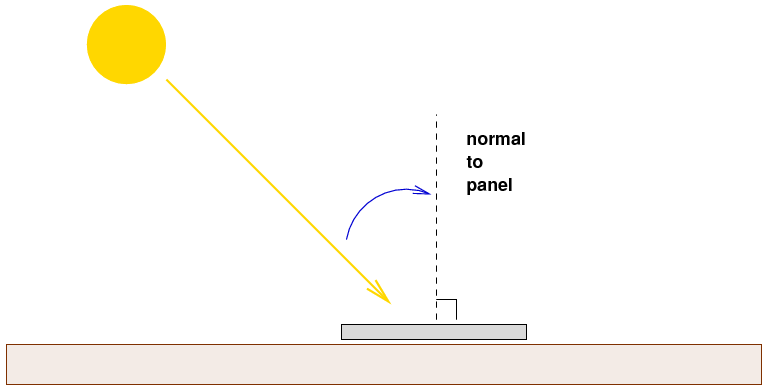
So, we place our panel flat on the ground in Rochester, New York.
 Copyright © Michael Richmond.
This work is licensed under a Creative Commons License.
Copyright © Michael Richmond.
This work is licensed under a Creative Commons License.